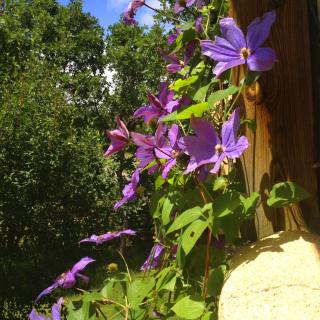

Spring is over, the time for planting and repotting is past… with summer comes the time to marcot your clematis and prepare cuttings from them to get even more abundant blooming!
Summer is the best season of all to discover this amazing family of climbing perennials, with its many member that all have spectacular and all-covering blooming!
The seemingly unending palette of colors, bloom shapes, and leafage definitely means it just must find a place in your garden.
Read also: How to care for Clematis and all our pages to discover clematis

Note that some varieties will still do ok in part shade.
To ensure this healthy sun-and-shade regime, cover the foot of the plant with a tile, old bricks, mineral mulch or just plant a low-growing shrub and ground cover around it. Most clematis species are perfectly happy in neutral soil, as long as it drains very well and contains lots of humus.
A word of caution: it doesn’t like being watered! Only water when it gets really hot, and only pour water some way off: don’t wet the leaves, and don’t drench the foot of the plant. Clematis is actually very vulnerable to wilting due to fungal infections… Full sun and lots of air circulation are two things you can secure to prevent this.
Lastly, it’s enough to give the plant compost in Spring and to cut it back after the blooming. If you need to reshape it more drastically, do so at the end of winter. Your clematis will have an easier time colonizing a wall and pergola if you set a trellis up for it. Over the first two years, train and tether the vine as it grows, knotting it loosely with a biodegradable fiber.
Did you know…?
Clematis is the symbol of long-lasting love.
Claire Lelong-Lehoang